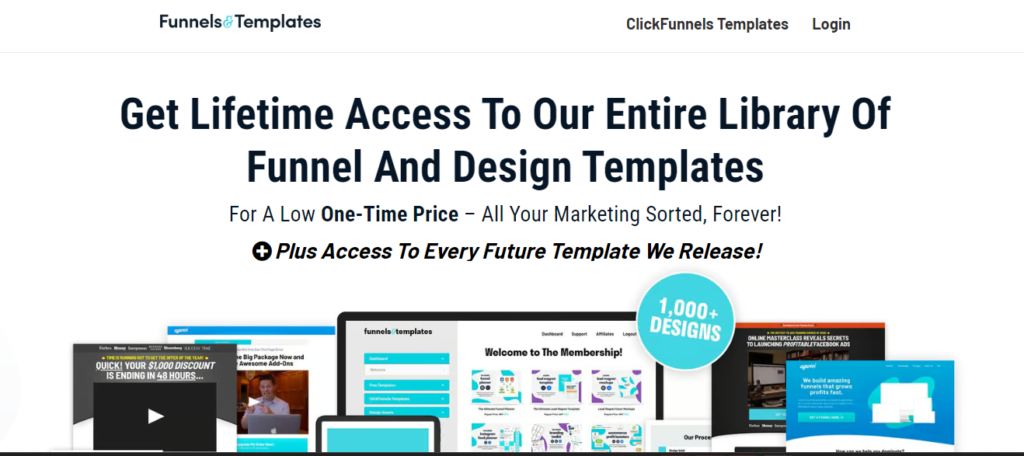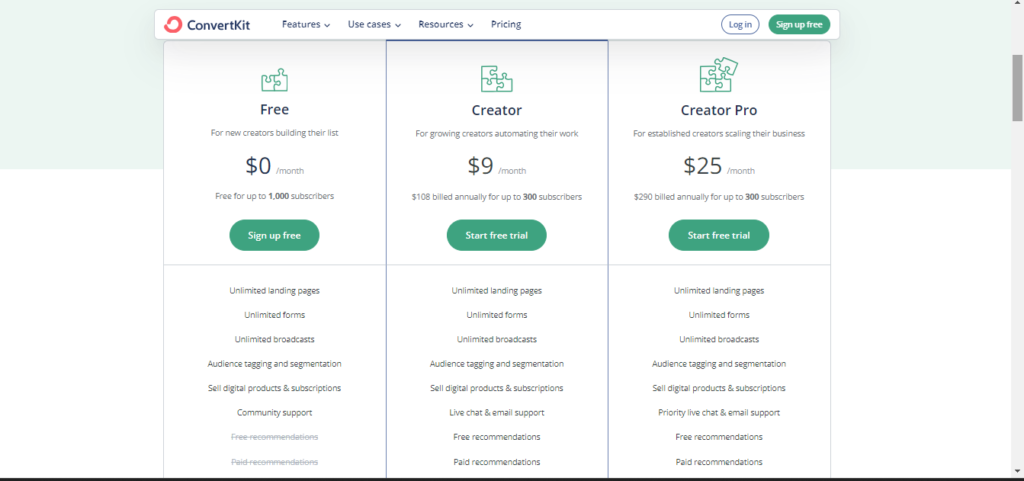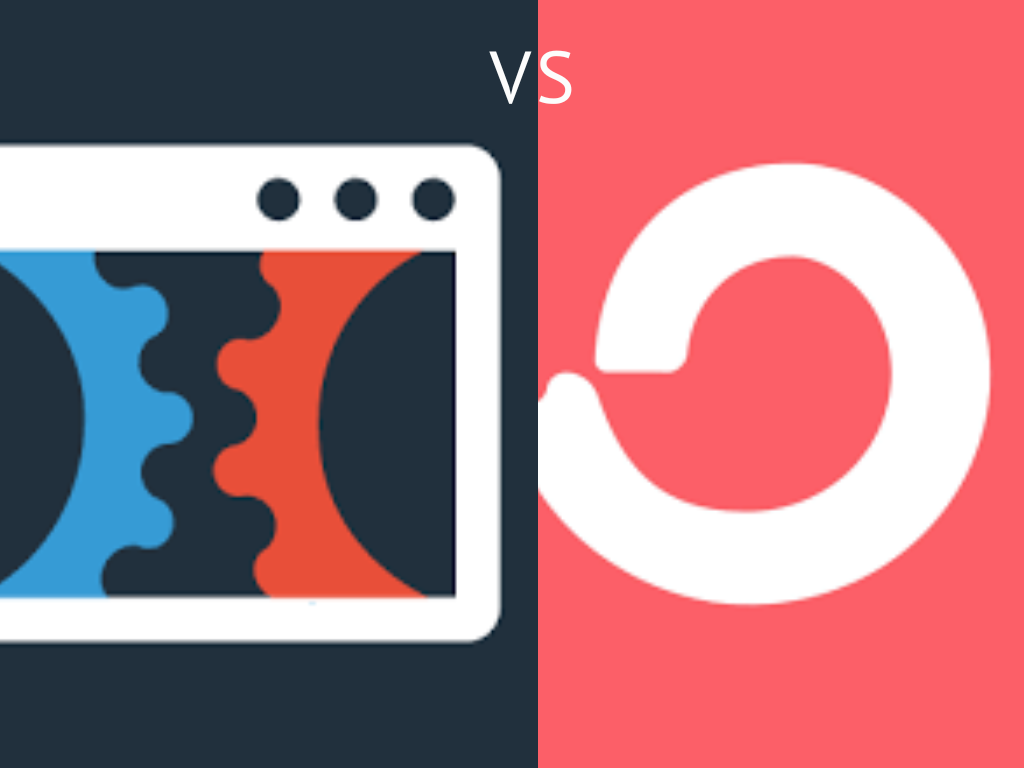Curious about the whole “ConvertKit vs ClickFunnels” showdown? You’re in good company! It’s like the digital marketing world’s version of a superhero battle, and guess what? We’re diving right into it. Whether you’re a blogger, a startup hustler, or a marketing guru, this post is your ticket to understanding these two powerhouses. We’ll chat about everything from how easy they are to use, to what kind of dent they’ll make in your wallet. So, grab a coffee, and let’s unravel the mystery of ConvertKit and ClickFunnels together. Who knows? By the end, you might just pick a side! Ready to start this fun ride? Let’s roll!
Table of Contents
Ease of Use
Let’s chat about how user-friendly ConvertKit and ClickFunnels are. When you’re juggling a million things, the last thing you need is a tool that’s as complicated as assembling furniture without instructions, right? So, in our “ConvertKit vs ClickFunnels” showdown, ease of use is a big deal.
ConvertKit is like that friend who’s super easy to get along with. It’s designed for folks who might not be tech wizards but still want to rock their email marketing game. The interface? Super clean and straightforward. Setting up an email campaign is a breeze, and managing your subscribers feels like a walk in the park. It’s perfect if you want to get things done without getting a headache from overly complex menus and settings.
Moving over to ClickFunnels, it’s a bit like that cool gadget with lots of buttons – a bit intimidating at first, but awesome once you get the hang of it. It’s packed with features for building your sales funnels, but that means there’s a bit more to learn. If you’re up for a small learning curve, ClickFunnels can be a powerhouse for your sales strategies, giving you all the tools to create funnels that really convert.

So, in the “ConvertKit vs ClickFunnels” debate, it boils down to what you need and how tech-savvy you are. ConvertKit is your go-to for straightforward, no-fuss email marketing, while ClickFunnels is great if you’re looking to dive deep into sales funnel creation with a few more bells and whistles.
Email Marketing Capabilities
Now let’s dive into the world of email marketing and see how our contenders in the “ConvertKit vs ClickFunnels” matchup stack up. If you’re like me, you want your email marketing to be effective without needing a PhD in tech, right? So, let’s break it down.
ConvertKit is like that trusty Swiss Army knife for email marketers. It’s super focused on making email marketing as painless as possible. You’ve got everything from easy-to-design emails to super-smart ways to segment your audience. This means you can send the right message to the right people at the right time, without pulling your hair out. Plus, their automation tools are top-notch, helping you set up email sequences that work while you sleep. It’s perfect if you’re all about growing and engaging your email list.

Now, ClickFunnels might not be the first name you think of for email marketing, but it’s got some tricks up its sleeve. It’s more like a multitool, where email marketing is just one of the many features. With ClickFunnels, your emails are part of a bigger picture – your sales funnels. It’s great for creating email sequences that tie in with your sales strategies, but it might not have all the bells and whistles of a dedicated email platform like ConvertKit.
In the “ConvertKit vs ClickFunnels” debate for email marketing, it really comes down to what you’re looking for. If you want a dedicated, easy-to-use email marketing tool, ConvertKit is your guy. But if you’re after a broader tool that includes email marketing as part of a larger sales strategy, ClickFunnels could be your match.
Sales Funnel Functionality
In terms of sales funnels functionality in our “ConvertKit vs ClickFunnels” exploration. If you’re in the online marketing game, you know how crucial a well-oiled sales funnel can be. It’s like the roadmap that guides your customers from “just looking” to “shut up and take my money!” So, how do ConvertKit and ClickFunnels stack up in this arena?
ConvertKit is primarily an email marketing tool, but it does offer some basic sales funnel functionality. It’s like having a neat, little toolkit for simple sales funnels. You can create landing pages, send automated emails, and do some basic lead nurturing. It’s great for solopreneurs or content creators who need straightforward funnel capabilities without all the bells and whistles. Think of ConvertKit as a streamlined, easy-to-navigate path for your sales funnel needs.
Now, when it comes to ClickFunnels, you’re talking about the big leagues of sales funnel functionality. This platform is like a full-blown construction set for building complex, highly effective sales funnels. ClickFunnels lets you design each stage of the customer journey, from landing pages to checkout processes. It’s packed with features for A/B testing, upselling, and analytics. If you’re looking to create a sales funnel that’s tailored to the T and optimized for conversions, ClickFunnels is your go-to tool.
In the “ConvertKit vs ClickFunnels” comparison for sales funnel functionality, it’s pretty clear. ConvertKit is great for basic, email-focused funnels, while ClickFunnels is the powerhouse for building comprehensive, conversion-optimized sales funnels.

Landing Page Design and Templates
Moving on to landing pages in our “ConvertKit vs ClickFunnels” exploration. If you’re like me, you know that a killer landing page can be a game-changer for your online presence. So, how do these two stack up in this arena?
ConvertKit might not be the first name that pops up when you think of landing pages, but it’s got some pretty neat tricks up its sleeve. It offers a range of simple, clean templates that are super easy to customize. You don’t need to be a tech wizard to make a good-looking page. ConvertKit’s templates are especially great if you’re focused on building your email list or promoting a specific product. They’re straightforward, no fuss, and get the job done.
Now, ClickFunnels is like the big kahuna of landing pages. It’s what they’re known for! Their templates are all about conversions. Whether you’re selling a product, hosting a webinar, or building an email list, ClickFunnels has a template for pretty much everything. And the customization options? Endless! You can tweak and twist your landing pages to your heart’s content, making sure they align perfectly with your brand and campaign goals.
The “ConvertKit vs ClickFunnels” showdown for landing page design and templates, it’s a bit of a David and Goliath story. ConvertKit keeps it simple and effective, perfect for straightforward campaigns. ClickFunnels, on the other hand, gives you all the tools to create highly optimized, conversion-focused landing pages.

Pricing and Plans
Alright, let’s talk money and get down to the nitty-gritty of “ConvertKit vs ClickFunnels” in terms of pricing and plans. I know, I know, figuring out pricing can be as fun as a root canal, but it’s super important, right? So, here’s the lowdown on what these two giants are going to cost you.
ConvertKit is pretty cool with its pricing. They start you off with a free plan – yes, totally free! This is great if you’re just dipping your toes into the email marketing pool. It covers the basics like email sending and landing pages. But as you grow and your subscriber list gets bigger, you’ll need to switch to their paid plans. These plans are based on the number of subscribers you have and offer more advanced features like automation and premium support. The best part? ConvertKit’s pricing is super transparent, so no nasty surprises!

ClickFunnels, on the other hand, keeps it simple with just a couple of main plans. The basic plan gets you all the essentials for building funnels, but there are limits on the number of funnels and pages. If you’re looking for the whole shebang, like affiliate management and more funnel options, you’ll want their advanced plan. It’s pricier, but hey, you get a lot more bang for your buck.

So, when you’re weighing up “ConvertKit vs ClickFunnels”, think about what you really need. If email marketing is your jam, ConvertKit is more wallet-friendly and tailored just for that. But if you’re all about creating killer sales funnels and want a broader toolset, ClickFunnels might be worth the extra dough.
Customer Support and Resources
Let’s talk about something super important in the “ConvertKit vs ClickFunnels” world – customer support and resources. Because let’s face it, even the best of us run into hiccups and need a helping hand sometimes, right?
ConvertKit really shines when it comes to customer support. They’re like that reliable friend you can call on when you’re in a bind. Their support team is known for being responsive and helpful. Plus, they’ve got a treasure trove of resources – we’re talking webinars, extensive guides, and a helpful blog. It’s perfect for when you want to learn something new or troubleshoot an issue. And if you’re a fan of community support, ConvertKit has an active community where you can share ideas and get advice from fellow users.
Switching gears to ClickFunnels, these guys take support seriously too. They offer a range of support options, including email and live chat. But where they really stand out is their FunnelFlix – think Netflix, but for marketing and sales training. It’s packed with courses and videos to help you get the most out of their platform. Plus, their community is huge and super active, which is great for networking and getting tips from other users.
In the “ConvertKit vs ClickFunnels” debate, both platforms score pretty well in the customer support and resources department. ConvertKit is awesome for its direct support and educational resources, while ClickFunnels goes the extra mile with its extensive training library and vibrant community.

Automation and Workflow Management
Let’s jump into the exciting world of automation and workflow management in our “ConvertKit vs ClickFunnels” journey. If you’re anything like me, you love it when things just work like magic, saving you time and hassle. So, how do these two platforms help you automate your marketing and manage workflows? Let’s find out!
ConvertKit is a bit like having a smart assistant who takes care of your email marketing. Its automation features are pretty slick. You can set up automated email sequences that trigger based on what your subscribers do (or don’t do). It’s great for nurturing leads and keeping your audience engaged without you having to manually send out each email. Plus, ConvertKit’s visual automation builder makes it super easy to set up these workflows. You can see your entire email strategy in one view, which is pretty cool and super helpful for planning.
Now, ClickFunnels takes automation to a whole new level, especially when it comes to sales funnels. It’s like having a whole team working for you. You can automate not just emails, but entire sales processes. From capturing leads to processing payments, ClickFunnels lets you build a seamless flow that guides your customers from the first click right through to the final sale. It’s more complex than ConvertKit, but the level of automation you get is seriously impressive.
In the “ConvertKit vs ClickFunnels” debate for automation and workflow management, it’s all about what you need. ConvertKit is awesome for straightforward, effective email automation. ClickFunnels, though, is your go-to for automating complex sales funnels and processes.

Conclusion and Recommendations
Well, folks, we’ve reached the end of our “ConvertKit vs ClickFunnels” adventure. It’s been quite the journey, hasn’t it? We’ve delved into everything from email marketing capabilities to the nitty-gritty of pricing and plans. Now, it’s time to wrap things up and hopefully help you make that all-important decision.
Here’s the deal: ConvertKit is your go-to if you’re all about building and nurturing an email list with ease. It’s user-friendly, great for beginners, and perfect for those who want to focus primarily on email marketing without getting lost in a sea of complex features.
On the other hand, ClickFunnels is like the Swiss Army knife of online marketing tools. It’s ideal if you’re looking to create comprehensive sales funnels that do more than just email. Yes, there’s a bit of a learning curve, but the payoff is a robust system that can handle everything from lead capture to sales, all in one place.
So, who wins in the “ConvertKit vs ClickFunnels” showdown? Well, it really comes down to what you need for your specific business goals. Are you a blogger or content creator focusing on growing your audience through email? ConvertKit might be your best bet. Or are you a business looking to optimize every step of your sales process? Then ClickFunnels could be the way to go.
Remember, the best choice is the one that aligns with your goals, your audience, and your way of working. Both ConvertKit and ClickFunnels are fantastic tools in their own right – it’s all about finding the right fit for you.
Thanks for sticking with me on this journey. Here’s to making the right choice and skyrocketing your online marketing efforts!


